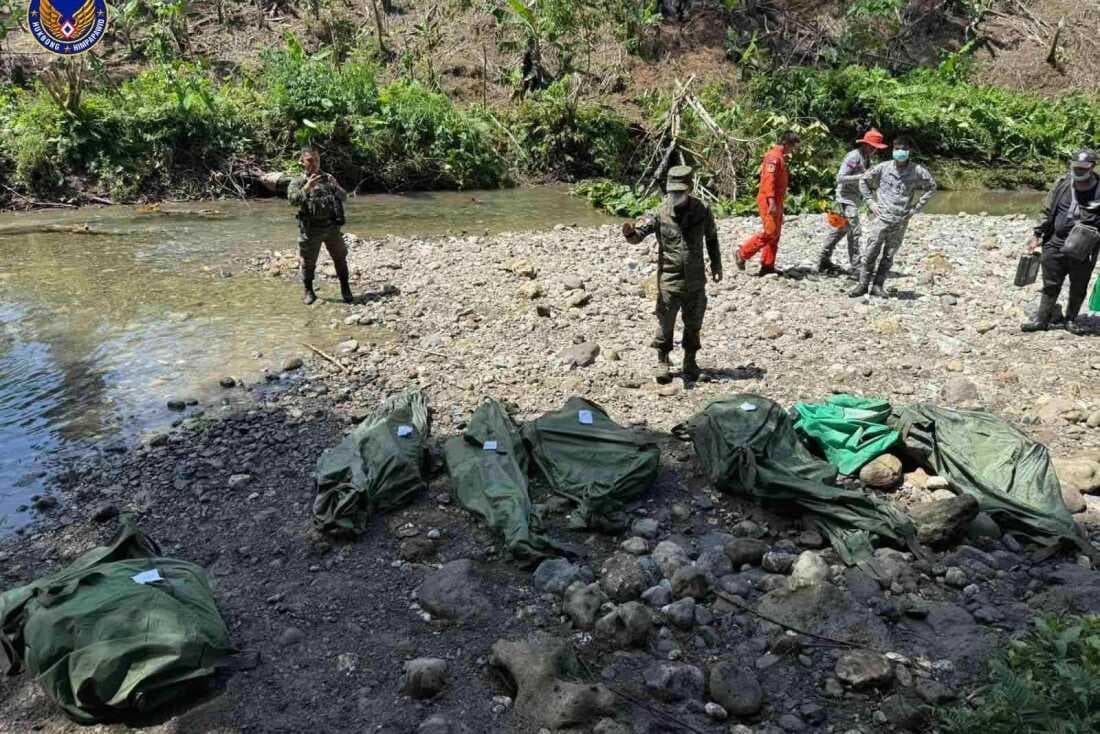We're loading the full news article for you. This includes the article content, images, author information, and related articles.
A powerful typhoon has devastated the central Philippines, causing widespread flooding and landslides. While no direct impact is expected for Kenya, the disaster highlights the increasing severity of global weather events and the critical need for robust disaster preparedness.

GLOBAL - Typhoon Kalmaegi, known locally as Tino, has carved a path of destruction through the central Philippines, with the death toll climbing past 100 as of Thursday, 6 November 2025, according to local officials. The typhoon, one of the strongest to hit the archipelagic nation this year, has triggered catastrophic flooding and landslides, displacing hundreds of thousands of people and prompting a large-scale humanitarian response.
The majority of fatalities were reported in the central province of Cebu, a major economic and tourist hub with a population of over 2.4 million people. Cebu Provincial Spokesman Rhon Ramos confirmed on Wednesday that 76 people had died in the province alone due to what has been described as unprecedented flooding that swept away homes, vehicles, and even shipping containers. The province has since been placed under a state of calamity to expedite relief and recovery efforts. This disaster compounds the region's suffering, as Cebu was still recovering from a 6.9 magnitude earthquake on 30 September that killed 79 people and displaced thousands.
Tragedy struck the relief efforts on Tuesday, 4 November, when a Philippine Air Force (PAF) UH-1H "Super Huey" helicopter crashed on Mindanao island, south of the main storm track. The aircraft was en route to Butuan from Davao to conduct a Rapid Damage Assessment and Needs Analysis (RDANA) mission. The military confirmed that all six crew members aboard were killed in the incident, which occurred in Agusan del Sur province. An investigation into the cause of the crash is underway.
Typhoon Kalmaegi, the 20th tropical cyclone to enter the Philippine Area of Responsibility (PAR) this year, made its first of eight landfalls late on Monday, 3 November. According to the Philippine Atmospheric, Geophysical and Astronomical Services Administration (PAGASA), the storm entered the PAR on Sunday, 2 November, as a tropical storm and rapidly intensified into a typhoon. At its peak, Kalmaegi packed sustained winds of up to 130 km/h (81 mph) with gusts reaching 180 km/h (112 mph). The storm traversed the Visayas island group before moving into the South China Sea on Wednesday, 5 November, heading towards Vietnam.
The typhoon's torrential rains triggered severe flash floods and landslides. In Canlaon City, on Negros Island, at least 12 people were killed after heavy rains loosened volcanic mudflow from the nearby Kanlaon volcano, burying homes. Widespread power outages were reported in 52 municipalities, complicating communication and rescue operations.
Philippine authorities had preemptively evacuated over 387,000 people ahead of the storm's landfall. The National Disaster Risk Reduction and Management Council (NDRRMC) reported that over 1.1 million people have been affected by the typhoon. The Philippine Red Cross has been actively providing first aid, hot meals, and psychological support to displaced families. Non-governmental organizations like World Central Kitchen and CARE Philippines have also mobilized local partners to provide food and conduct rapid needs assessments.
The international community has begun to respond. The United States, Canada, Australia, and several other nations have expressed their condolences and stated their readiness to assist with relief efforts. U.S. Ambassador MaryKay Carlson confirmed that the embassy is working with partners in the Philippines to provide assistance.
The Philippines is located in a highly disaster-prone region, experiencing an average of 20 typhoons and storms annually. The increasing intensity of these weather events is a stark reminder of the global climate crisis. While there are no direct implications for Kenya from Typhoon Kalmaegi, the event underscores the universal need for effective disaster management strategies and international cooperation in humanitarian crises. The challenges faced by the Philippines in responding to overlapping disasters—an earthquake followed by a powerful typhoon—offer critical lessons for emergency preparedness and climate resilience for all nations, including those in East Africa which have faced their own severe flooding events. The situation remains fluid, and the final toll of casualties and damages is expected to rise as rescue and recovery operations continue.
Keep the conversation in one place—threads here stay linked to the story and in the forums.
Other hot threads
E-sports and Gaming Community in Kenya
Active 7 months ago
Popular Recreational Activities Across Counties
Active 7 months ago
The Role of Technology in Modern Agriculture (AgriTech)
Active 7 months ago
Investing in Youth Sports Development Programs
Active 7 months ago